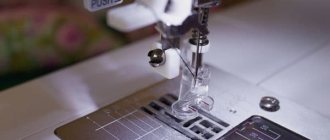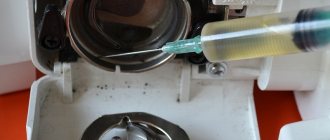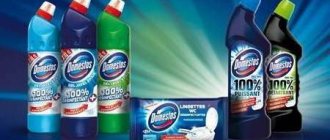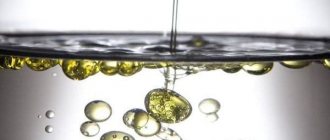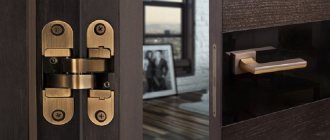Any equipment, mechanism or device needs care and lubrication. In order for your sewing machine to work properly, it must be regularly cleaned, lubricated and stored in appropriate conditions. However, how to clean and store your “swallow”, what oil to choose for sewing equipment and how to correctly and accurately change the oil in a sewing machine are the main issues that this article is devoted to.
What is sewing machine oil?
Sewing machine oil is nothing more than a lubricant that reduces friction and wear on machine elements, covering them with a protective layer, thereby extending their service life. Thus, it is necessary for:
- reducing friction on rubbing elements;
- reducing wear of mechanisms;
- protecting and cleaning components and parts from dust;
- prevent rust.
Where the oil is located in the sewing machine, which parts need lubrication and how often they need to be lubricated are stated in the operating instructions that come with the sewing equipment.
The ingredients of sewing machine oil depend on the raw materials from which it is made. There are the following main groups of oils, differing in their raw materials, which are used to lubricate sewing machines:
- mineral (petroleum) oils - obtained by refining oil, resulting in the formation of a mixture of high-boiling carbons;
- synthetic oils - are produced through the synthesis of chemical elements, as a result of which the presence of mineral fats and solvents is excluded in their composition;
- semi-synthetic oils - are a mixture of petroleum and synthetic oils in a certain proportion.
Purpose of the lubricant
A sewing machine is an excellent helper in household chores, allowing you to sew, alter or build something that your family needs. This device plays an even more important role on a production scale, where the enterprise employs a large number of sewing machine operators who produce sewing products every day. Regardless of what role the machine performs, what structure and appearance it has, the main thing remains to treat it with care and timely maintenance.
With frequent sewing, using fabrics of different densities and compositions, dust, dirt, threads and remnants of matter begin to get inside the equipment. If you clean the machine on time, there will be no problems with its operation. To remove dirt, a special brush with long and hard bristles is used, which makes it possible to remove hard-to-reach debris.
Cleaning the sewing machine alone will not achieve ideal and long-term operation of the device; an even more important step is adding oil to the sewing equipment. With these supplements you can achieve:
- reducing the load on parts that constantly rub during operation;
- improving the condition of parts that will wear out less;
- additional protection of the inside of the equipment from dust and contamination;
- absence of rust on metal components.
Lubricant for industrial sewing equipment
Sewing equipment can be domestic or industrial.
Household sewing machines are designed for thin and medium-sized fabrics. It is better not to sew items made of thick and rough fabric with their help. These are mainly mechanical and electromechanical equipment. Such machines are characterized by a drip lubrication system or “dry” lubrication, in which all parts are filled with oil and operate for a certain time without additional lubrication.
Industrial sewing machines are electronic devices with microprocessors and program control. Such machines are divided into classes depending on what fabrics they can process: light and medium fabrics, medium and heavy fabrics, and especially heavy fabrics.
The latest industrial machines are equipped with an automatic lubrication system, thanks to which lubricant is supplied through special channels to mechanisms subject to friction. Since the computer itself determines the frequency and required volumes of lubricant, the sewing machine has a special reservoir (crankcase) for storing oil. The crankcase has marks indicating the oil level. The whole job of lubricating such machines is to watch the mark and replenish the reservoir in time.
Some industrial sewing machines, like household ones, are lubricated using a drip lubrication system or a “dry” method, in which the main rubbing parts and mechanisms are made of special materials with a reduced friction coefficient and lubricated with a special substance. Such machines must be serviced by professionals.
Both types of sewing machines can be treated with both mineral and synthetic oil. The recommended type of lubricant for a specific equipment is indicated in the instructions for its use. Let's look at how the two types of oil differ from each other.
Synthetic sewing machine oil has a number of advantages:
- the viscosity of synthetic oil does not change over a wide temperature range: from -40°C to 200°C;
- such oil is more fluid than petroleum oil and its penetrating properties are higher;
- does not contain mineral fats or solvents;
- necessary for lubricating and adding shine to plastic and elastomeric surfaces;
- prevents threads from sticking and twisting, reducing the number of thread breaks;
- breaks down in a large number of solvents;
- not oily, not rancid;
- protects your machine from corrosion and oxidation processes.
Among synthetic oils for sewing machines, silicone oils are especially popular. This type of oil is suitable for oiling threads, blades, knives, all parts and assemblies, rubber and plastic elements. Treatment is carried out using a brush or spray.
Mineral (petroleum) oil. Among mineral oils, the most popular is vaseline (white paraffin) oil - this is a transparent, purified solution of liquid saturated hydrocarbons. It has a watery white color and is practically odorless because it does not contain aromatic compounds. Particularly in demand for mechanisms requiring high purity of lubricants.
This type of oil is well suited for sewing machines and overlockers, since it is easily washed off upon contact with fabric. Vaseline oil can be used both for industrial sewing and “amateur” sewing machines, and for various types of knives, blades, rubber and plastic elements and parts of knitting machines. This oil can also be used to eliminate jammed zippers in clothes.
Main characteristics of vaseline oils:
- colorless, tasteless and odorless;
- does not contain harmful and toxic substances, therefore it is safe when touching food;
- has an antistatic effect;
- improves the sliding process and protects elements from sticking together;
- does not leave greasy marks;
- the oils do not contain solvents;
- protects against corrosion.
The characteristics of synthetic and mineral oils are similar and are used for the same purposes. However, the cost of synthetic oil is significantly higher than mineral oil.
How can I replace specialized oil?
It is not always possible to purchase a specialized professional product for lubricating sewing equipment. In this case, the housewife is faced with the question of what can replace it. There are not many replacement options. For this purpose, the following types of oil are used:
It is better to use substitutes not on an ongoing basis, otherwise the performance of the equipment may deteriorate. These compositions are quite acceptable as replacement options from time to time. Some housewives believe that even ordinary vegetable oil used for cooking can be dripped onto the parts. Of all the replacement options, this one will be the most unsuitable; the result of its use may be the gluing of equipment parts.
Lubrication of the sewing machine is necessary to ensure normal operation of the internal mechanism. It is best to use professional oil for this purpose, used for industrial equipment; its composition is optimal. Replacement options are acceptable, but it is advisable to use them occasionally, for example, if a specialized product has run out. The frequency of lubricating parts depends on how often the housewife sits down to sew. For regular work, the procedure should be carried out once a month.
Source
Which one is better?
The choice of special sewing oils is very diverse. There are many manufacturers on the market that offer oils of various properties, price ranges and qualities. Main characteristics that should be considered when choosing oil for sewing equipment:
- degree of cleaning - clean and transparent lubricant does not cause sticking of elements and is not left on the fabric;
- viscosity - reflects the degree of strength of the oil film on lubricated mechanisms. The viscosity of oil for a sewing machine in the best value is 18-20 cSt (mm›/s);
- pour point and ignition temperature;
- chemical stability - the ability not to oxidize or deteriorate under the influence of external forces and the interaction of oil with metal parts and various fabrics;
- cleaning properties - the ability to wash away particles of dust and debris;
- the presence of additives and additives that can improve the properties of the oil.
Everyone chooses a lubricant according to their taste and wallet. However, it is worth noting that the consumption of high-quality oil is not high - one jar will last for a couple of years, since such oil does not spoil.
In many forums dedicated to the topic of sewing machines or simply sewing and needlework, among the advice of visitors there are various alternatives to oil for sewing machines.
Some advise saving money and not spending money on sewing oil and taking what you have at home or in the garage, for example, car oil. Others advise using vegetable oils like sunflower or olive.
However, do not try to follow such advice and risk your equipment! The viscosity of automobile and sewing oils is not the same, which can lead to jamming of the sewing machine, and then cleaning all mechanisms from inappropriate oil will require a lot of labor, time and money.
The same applies to ordinary vegetable oils - sunflower, olive or any other that you have at home https://holz-house.ru/. These oils are suitable for consumption, but not for lubrication of sewing equipment. At first it may seem to you that the machine is working perfectly, but then this oil will turn into glue, all the mechanisms will stick together, and the machine will simply stop functioning.
Also, you should not use dark and cloudy oil lying around, even sewing oil. Its action is similar to that of automobile and vegetable oil. You can spoil the machine in no time, but then returning it to working condition is already a problem.
Rules for self-lubricating a sewing machine
Parts that are located in easy access areas can be processed independently. But if the machine is still under warranty, do not rush to disassemble it. Carefully read the terms of warranty service and operation. For some mechanisms, you may need to contact an authorized service center.
Why lubricate parts?
Lubrication is required for any mechanisms, no matter what kind of drive they operate on - manual, foot or electric. Lubrication:
Caring for the machine helps to avoid thread twisting, chewing and damage to fabrics.
How often should you lubricate your machine?
The frequency of lubricating the sewing machine depends on the intensity of its use. If you do sewing every day and this is not minor work, but a full load, then you can apply a protective layer even every day before work.
If you sew regularly and a lot, two to four times a week, then monthly prevention is sufficient. If even less often, but regularly, then do the procedure once a quarter.
Machines that are rarely used from time to time are recommended to be lubricated before use. For example, if you were cutting out a dress or getting ready to sew a set of bed linen, you lubricated the sewing machine and prepared it for the load.
Of course, sometimes there is simply no time to do this if you need to quickly make a couple of stitches. But it is important to remember that even when the machine is just standing, the oil dries out and the mechanisms become vulnerable to friction.
All moving metal mechanisms need lubrication. Everything that rotates, spins, moves inside the housing. There is no need to lubricate the external parts, the entire hook, needles, foot.
Manual and automatic lubrication
Lubrication can be manual or automated. In the first case, the responsibility to coat parts and assemblies with oil falls on the user. He must manually apply the product to the desired areas using a special oiler or syringe.
In the second option, oil is simply poured into a designated container, and a smart system directs the substance to the areas of the mechanism. The main thing here is not to forget to add lubricant in time and make sure that it does not run out.
Typically, household sewing machines need to be operated manually. And professional equipment is equipped with automatic supply of lubricants. This is convenient, since lubrication every day is problematic.
To lubricate sewing machines manually, oil is sold in oil cans with long dispensing spouts . The spouts are convenient for grinding parts inside the body. However, you can’t get through everywhere.
For hard-to-reach areas, you can use medical syringes. It is convenient to dose the lubricant with a syringe, because you need to apply a small drop at a time.
Oil for Juki
The best oil for a sewing machine is the one that comes with it. That's why Juki sewing machine oil is sold with it. However, the same oil can be purchased separately or ordered through official representatives of the company.
Oil for a Bernina sewing machine, as well as oil for a Janome sewing machine, cannot be found on the open market. Therefore, if for some reason there is no “native” oil, you need to purchase a special oil for the sewing machine, which should be fluid and transparent. The types of oils and their properties have been described above.
The oil can or jar into which the oil is poured must also meet the quality requirements - good plastic without flaws, indicating the country of production. The oiler should be ergonomic.
To prevent dust and debris from getting into it, the lid or cap must be tightly closed. The tip of the oiler should be long enough and not too wide to reach hard-to-reach places. It is logical that the oiler should not be large, because it will be inconvenient to use.
Features of the lubrication procedure
When lubrication, you need to follow several rules:
- Strict compliance with the requirements stated in the operating instructions. As a rule, the manufacturer records all algorithms and actions in the instructions; they are different for each model;
- Only metal parts need to be lubricated; the compound cannot be applied to plastic gears;
- Too much lubrication is just as dangerous as no lubrication. Excessive amounts of the component will lead to intense accumulation of dust and other undesirable phenomena;
- After the procedure, you need to let the machine idle for 1-2 minutes so that the composition is evenly distributed among the moving elements.
Algorithm of actions
For the lubrication procedure, you cannot use any other oil other than machine oil! First you need to pre-prepare your sewing machine. For this:
- Remove dust from parts of the device, including under the platform.
- Get rid of dirt in the lubrication holes.
- Wipe the outside with a cotton swab soaked in alcohol and petroleum jelly.
Important! If the unit has not been used, it should be stored under a hood or cover.
Let's look at the algorithm for how to lubricate a Janome sewing machine. When working, you must follow the operating instructions.
Step-by-step algorithm:
- Disconnect the device from the power supply and remove the threads.
- Spread the oilcloth on the table and place the typewriter there.
- Unscrew the screws and remove the plastic housing according to the instructions. To avoid confusion when assembling, place them on labeled paper sheets.
- Clean the “backbone” with a brush, removing all dirt.
- Fill a syringe with oil and lubricate all parts and rubbing parts indicated in the attached documentation. Usually there are photographs, so it won’t be difficult to figure it out.
- Blot excess oil with a napkin.
- Assemble the body.
- Thread the sewing machine and sew a few stitches to make sure the seam is clean and free of oil marks.
- The procedure is completed.
Old cars
If you find a treasure in your grandmother’s attic in the form of an old Singer or Podolsk, do not rush to call the antique store. If you love handicrafts, this find is a real treasure for you. The mere fact that it is probably still working speaks volumes. And there’s simply nothing there to break, so it’s easy enough to set up the machine and you can start working. It is even easier to lubricate than modern ones.
Option 1
On a manual machine you will find one or two latches that secure the body to the stand:
- Move them aside and lift the body - the insides will appear in front of you, and you can easily find the parts that need to be lubricated, that is, almost everything that moves.
- Older cars had all the parts made of metal, so just put some oil where they touch and that's it. Moreover, you can easily penetrate both the shuttle mechanism and the needle bar assemblies.
Option 2
If you have a foot-operated machine in front of you, the order will be the same. The valves move back, the body turns over - you can drip. You just need to lubricate the drive mechanism components.
Important! Old machines are less demanding on the quality of oil, so any machine oil will do, but vegetable oils should not be used in this case either.
Sequence of disassembling and lubricating the machine
All sewing machines need to be lubricated occasionally.
How often? If you work on it regularly and a lot, then you need to lubricate the sewing machine weekly; if from time to time, then once every 3 months is enough. If it is rare, the old oil may thicken, and you will have to lubricate the machine again before sewing. The machine itself will tell you when it needs to be lubricated. It will start creaking and knocking. In order to lubricate a modern machine, it is not at all necessary to take it to a service center; you can do it yourself at home. Don't experiment with oil, buy regular household oil for sewing machines. At the pharmacy, take a 20 ml syringe into which you will draw oil for lubrication.
To lubricate the machine, of course, you need to remove the casing. It is not difficult. Let's see how to do this using the AstroLux machine as an example.
How to remove the body of a modern sewing machine
Attention! We carry out all further work on the machine with the power cord disconnected.
First, clear out the space where you will be working on the machine. Remove all extraneous items. You can cover them with oil, they will interfere with your work. You will need a screwdriver with a small blade but a strong shaft, a comfortable handle, and a piece of lint-free cloth to remove excess oil. Cover the table with newspaper or scrap cloth.
Look at your sewing machine. The shiny screws on the body of the machine will immediately catch your eye. They need to be unscrewed. The screws are different in shape and length. In order not to rack your brains later on where to screw in which screw, I suggest using a felt-tip pen to put a unique number next to each screw on the body of the machine, and wrap the unscrewed screw from this place in a piece of paper and mark it with the same number.
You don’t have to remove these markings, because you will have to lubricate the machine more than once, but regularly. If you still need to erase the felt-tip pen, it can be easily washed off with alcohol.
Needle bar cover
You can remove the body in any order. The instruction manual for your machine contains a description of how to remove the cover from the needle bar. That's where we'll start. We unscrew the screw that holds it and remove the casing in an upward direction to the side.
Let's put the machine on the table so that its bottom is in front of us.
Numbering the screws
Let's label the places of the screws on the cover that covers the machine mechanism and unscrew them.
We wrap each screw in paper and put a number in accordance with the place from where it was unscrewed.
Shafts for lubrication. Bottom view
Two shafts were exposed in front of us; their rotation points in the bushings will need to be lubricated, but that will come later, but for now we continue to remove the housing.
Mode selector knob
Pull the operating mode switch knob to the right and remove it.
Side cover
Unscrew screw 9 above the operating mode switch handle and remove the side cover. The flywheel remains on the shaft.
Screw at the foot
Here is another screw (in the photo below it is marked with number 5.) that holds the case. We unscrew it.
Screws under the handle
There are also two screws under the handle. They also need to be removed.
Screws at the coil pins
The two screws at the coil pins are also unscrewed.
Lower the tab to remove the rear casing
Lubrication cover removed
All screws are removed. To remove the body, you need to lower the presser foot lifting handle. Now carefully separate the two halves of the plastic body and carefully remove it.
Half of the housing was removed, this is enough to lubricate all the shafts.
Pay attention to the red arrows. These places need to be lubricated too.
Shuttle assembly
This machine has a vertical shuttle. The instruction manual describes how to disassemble and lubricate it.
The holders are moved for disassembling the shuttle and lubrication
The shuttle holders are moved to the sides and the shuttle ring and the shuttle itself are removed.
The machine is ready for lubrication.
How to lubricate a sewing machine
We draw a little household machine oil into the syringe through a needle. We place the machine in front of us in the sewing position and slowly rotate the flywheel counterclockwise, i.e. down on yourself. All parts of the machine that move must be lubricated at friction points. The exception is white plastic gears that are lubricated with thick grease. They cannot be lubricated with machine oil!
Any equipment lasts longer and works more reliably if its owners provide it with proper care. This also applies to the sewing machine. It must be kept in order, since dirt constantly accumulates in it, but the machine should not stain or tear the fabric. Ordinary machine oil can make life easier for both the dressmaker and her “assistant”. How to lubricate a sewing machine? This is what we will talk about now.
